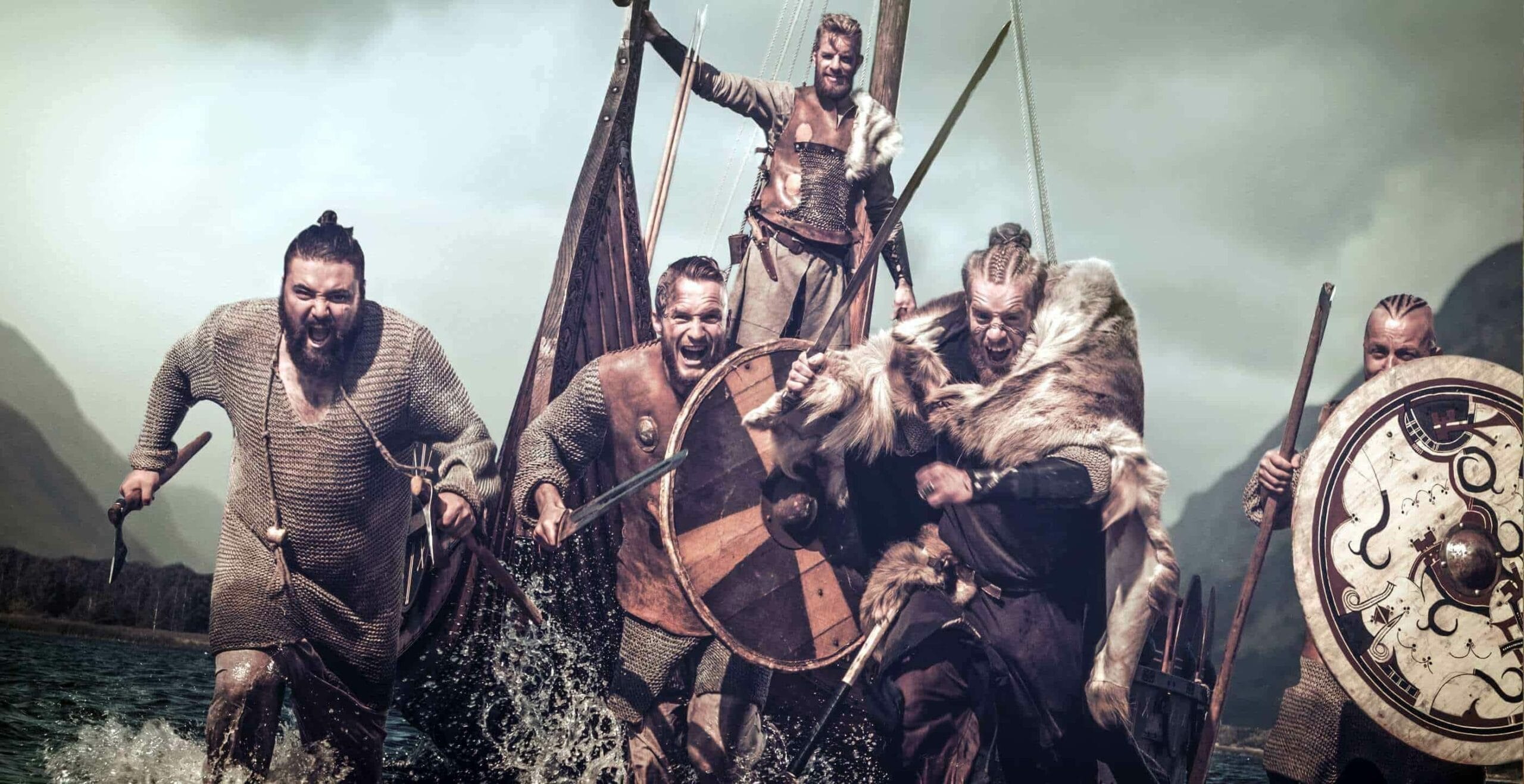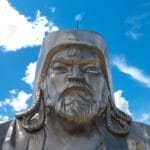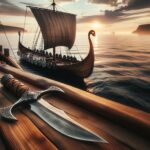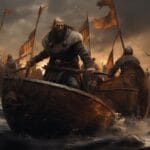The legendary Viking warrior Ragnar Lothbrok’s tales of courage and adventure have echoed through the ages. Yet, the location of his final resting place remains an enigma, a tantalizing mystery that continues to intrigue historians and enthusiasts alike. Let’s embark on a journey through history to explore the possible locations of Ragnar Lothbrok’s eternal abode.
Where is Ragnar Lothbrok Buried?
Ragnar Lothbrok, the legendary Viking warrior king, is a figure shrouded in mystery. While his exploits have been immortalized in sagas and historical accounts, the exact location of his burial remains unknown. Some historians speculate that England, the land where he met his demise, might hold the key to this enduring enigma.
A massive grave unearthed in Repton, England, containing the remains of over 300 Vikings, has fueled speculation that Ragnar Lothbrok might be among them. The sheer scale of the burial site, coupled with its location in a region where Ragnar is believed to have been active, makes it a compelling candidate. However, the absence of definitive markings or artifacts directly linking the site to Ragnar Lothbrok makes it impossible to confirm this theory with certainty.
Further complicating the matter is the lack of comprehensive historical documentation regarding Ragnar’s life. His story is interwoven with a rich tapestry of heroic sagas, some bordering on legendary myths, making it challenging to separate fact from fiction. This air of mystery surrounding his life, including his final resting place, only adds to the enduring fascination with this iconic Viking figure.
Adding to his mystique, Ragnar’s legacy extends beyond the pages of history books. His story has been immortalized in popular culture, captivating audiences through television shows like “Vikings” and video games like “Assassin’s Creed Valhalla.” These adaptations, while often taking creative liberties, further fuel the desire to uncover the truth behind the legend.
While the exact whereabouts of Ragnar Lothbrok’s grave may forever remain a secret, the quest for answers and the persistent fascination with his life continue to captivate our imaginations.
The Mystery of Ragnar Lothbroks Burial: Unveiling the Truth
The search for Ragnar Lothbrok’s final resting place is a journey through a landscape of historical conjecture and tantalizing clues. Repton, England, emerges as a prominent location of interest due to the discovery of a massive Viking graveyard. This site, with its multitude of Viking remains, initially sparked excitement as a potential burial ground for Ragnar. However, despite its promising location and scale, no concrete evidence links these remains to the legendary Viking king.
Adding another layer to the mystery is the fictional video game “The Mystery of Ragnar Lothbroks Burial: Unveiling the Truth.” This game presents a captivating, albeit hypothetical, scenario suggesting Ragnar’s burial in a snake pit east of Jorvik (modern-day York, England). While a thrilling narrative device, this theory lacks historical support.
Traditional Viking funerals involved setting a warrior adrift on a burning ship, a fiery spectacle befitting their legendary status. However, considering Ragnar’s supposed demise in a snake pit at the hands of the Saxon king Aella, a traditional burial seems unlikely. The logistics of a ship burial in enemy territory would have presented a significant challenge.
Thus, the enigma of Ragnar Lothbrok’s final resting place persists. The lack of conclusive evidence and the blend of historical accounts and fictional narratives only deepen the intrigue.
Historical Accounts and Conflicting Narratives
Unraveling the historical truth of Ragnar Lothbrok’s life is akin to navigating a labyrinth of legends and fragmented accounts. While medieval texts acknowledge his existence, confirming he was more than a mythical figure, the specifics of his life are often obscured by a blend of probable truths and embellished tales.
Norse sagas, poems passed down orally before being transcribed, and ancient Latin chronicles collectively portray Ragnar as a larger-than-life warrior. He is celebrated as a fearless explorer, a charismatic leader capable of uniting men, and a skilled tactician who left an enduring mark on the history of England and Francia. His name resonates with tales of daring raids and conquests, spanning from his Scandinavian homeland to the shores of mainland Europe.
One compelling aspect of Ragnar’s story is his lineage. Legend credits him with fathering a formidable dynasty of sons who rose to become Viking powerhouses in their own right. Names like Halfdan, Ivar the Boneless, and Hubba echo through history, their exploits intrinsically linked to the Viking Age’s expansion throughout the 9th century. Did you know that Ivar the Boneless’ skeleton found was, through an interesting study, found to be taller than most people think? Read more to discover how tall was Ivar the Boneless. These familial connections add a layer of intrigue to Ragnar’s story, hinting at a legacy that extended beyond his own lifetime.
However, the lack of definitive historical records from Ragnar’s era necessitates a cautious approach to the sagas and chronicles that recount his life. These sources, while valuable, might blend factual events with mythical elements and folklore, making it difficult to discern where history ends and legend begins.
Despite the historical ambiguity, Ragnar Lothbrok stands as a towering figure in the Viking Age. His name has become synonymous with the era’s spirit of adventure, unflinching courage, and bold leadership. This enigmatic figure, woven from the threads of historical accounts and captivating narratives, continues to fascinate us, drawing us into the world of Vikings and their epic sagas.
Archaeological Clues and the Repton Connection
The search for Ragnar Lothbrok’s final resting place leads us to Repton, England, a site that offers both tantalizing clues and persistent ambiguity. The discovery of a mass grave containing the remains of over 300 Vikings has fueled speculation that this could be the legendary Viking’s final resting place.
The Repton site’s connection to Ragnar is rooted in several factors. Firstly, its location in Mercia aligns with historical accounts that place Ragnar’s death in this region. Secondly, historical texts suggest that Ivar the Boneless, Ragnar’s son, may also be buried in Repton, hinting at a familial connection to this site.
The artifacts and burial rituals uncovered at Repton paint a picture of a grand funerary event, one befitting a high-ranking Viking figure. The elaborate nature of the graves and the presence of other Viking notables buried there suggest that Repton held significant importance. This has led some to believe that Ragnar, given his legendary status, would have been laid to rest in such a place of honor.
However, a key element of traditional Viking funerals, the burning of the deceased on a ship, appears to be absent at Repton. This discrepancy can be attributed to the circumstances surrounding Ragnar’s death. Having met his end in Northumbria, deep within enemy territory, a traditional ship burial would have been logistically impossible.
The Repton site, while not offering definitive proof, presents a compelling case for its connection to Ragnar Lothbrok. The location, the historical context, and the grandeur of the burial rituals all align with what we might expect for a figure of Ragnar’s stature. However, the lack of conclusive evidence ensures that the mystery surrounding his final resting place endures.
- Crypto Quotes’ Red Flags: Avoid Costly Mistakes - June 30, 2025
- Unlock Inspirational Crypto Quotes: Future Predictions - June 30, 2025
- Famous Bitcoin Quotes: A Deep Dive into Crypto’s History - June 30, 2025
















